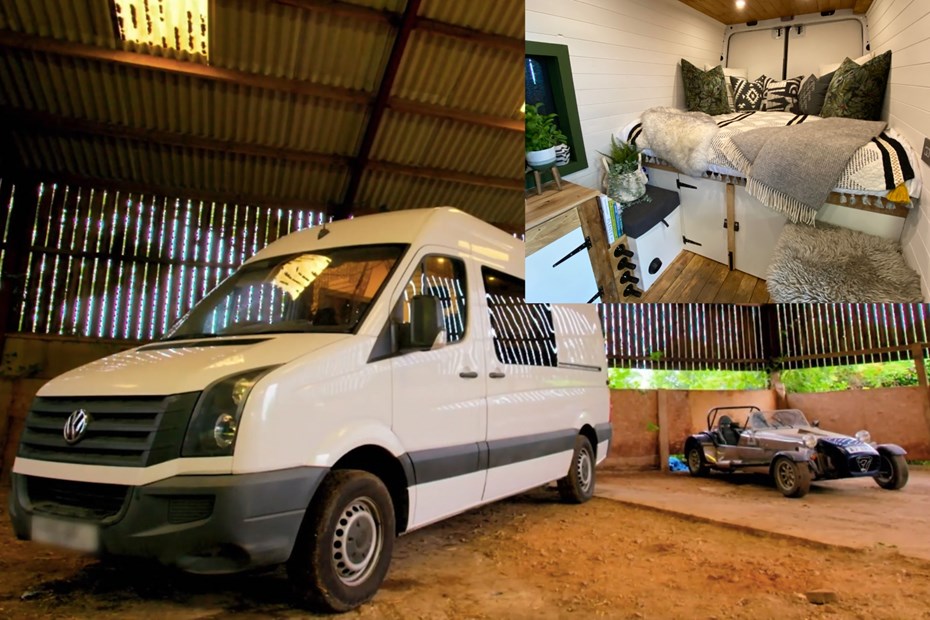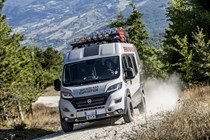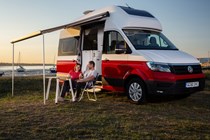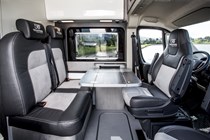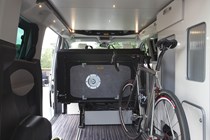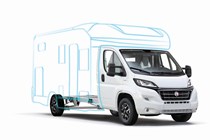Campervans are synonymous with freedom; you decide where you drive, where you stop, what and when you eat and drink, and where you sleep. All campervans can be described two ways; cosy and costly.
Campervans don’t cost the earth to run, but the majority have heavy initial outlay. Even comparatively small versions often come in well in excess of £50,000 to buy. Converting an existing van into a DIY campervan from the ground up is a cost-effective way to get exactly what you’re looking for.
It can be usually done for a fraction of the price of buying from a main dealer, but the sacrifice is your time. It’s not the best solution for everybody, though. There are lots of things to consider, research and experiment with before undertaking a conversion. We’ve put together this useful guide to help you evaluate if it’s a project that is something worth embarking it on.
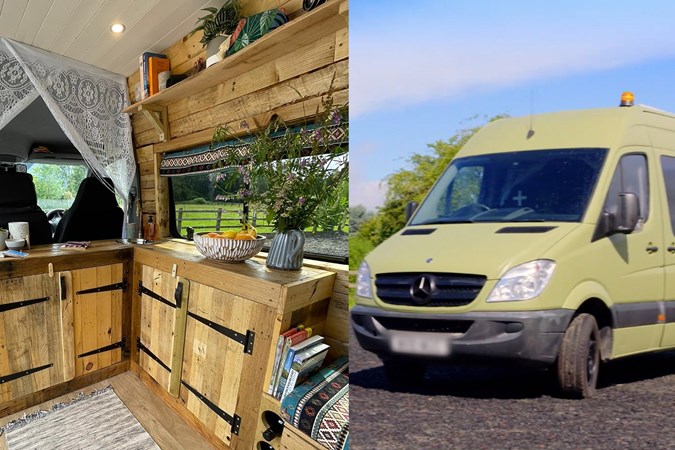
Your questions about converting a campervan answered:
> Why convert a van?
> Is it legal to convert a van into a campervan?
> Should I buy a new or used van?
> How much does a camper conversion cost?
> Do I need a special licence to drive a campervan?
> Best vans for a camper conversion
> Other things to consider
Why convert a van into a campervan?
Converting a campervan isn’t like building an all-new vehicle from the ground up. Instead, it’s like fitting out an empty house. Though you wouldn’t chop the roof off your family hatchback, you’d simply buy a convertible instead. But with a few exceptions, campervans aren’t made from the ground-up in factories anyway. Third-party conversion companies purchase vans and fit the interiors out as a separate venture. This means it’s a process that you can easily choose to undertake yourself.
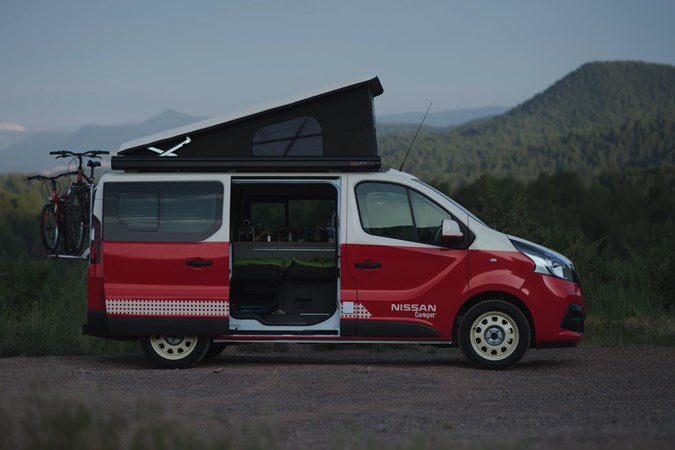
There are two main benefits to a DIY camper conversion; cost and flexibility.
Converting your own camper can be far cheaper than buying one from the regular campervan market . You don’t need to support the costs of the factory that built it, the dealership that sold it to you or really anything besides your own time and materials. This is especially true for those campervans sold through main car manufacturers. Vans, such as the Volkswagen California, aim to simplify the process but cost a fair chunk of extra money for that peace of mind.
You can also build on a used van, which could save you thousands before you’ve even begun. With the increasing presence of Facebook Marketplace, Freecycle, Freegle and Trash Nothing, plenty of components can be sourced for recycling or upcycling purposes.
Secondly, unless you’re specifically ordering a custom-built camper, you’re at the whims of whatever’s available when it comes to the layout and features of your van. As such, building your own camper can be ideal if your needs are somewhat unusual – maybe you’ve a large family and need plenty of travel seats, or you need the van to be accessible by wheelchair. The sky really is the limit here.
Is it legal to convert a van into a campervan?
Absolutely. As long as you steer clear of major structural modifications to the van’s chassis, engine or cab, you can convert the load area of your van to be just about anything you like.
You have to decided whether you wish re-register your vehicle with the DVLA as a campervan, or as a regular van. The benefits of doing the former are higher speed limits on UK roads, as well as the possibility of securing lower insurance premiums (or those tailored to campers). You may also be eligible for cheaper ferry or toll road prices, too.
The DVLA doesn’t make life easy for DIY converters to change their vehicle designation, however. Campervans must meet a strict set of guidelines aimed at ensuring your vehicle resembles the description of a campervan. That’s so police or other enforcement agencies can identify it easily.
The full list of requirements is available on the DVLA website. They include things like seats and a table, cooking facilities and storage cupboards, while externally the van needs motorhome-style graphics, windows and a habitation door.
The requirements are somewhat ambiguous and if you’re undertaking the project on your own we’d suggest seeking help from a specialist in order to make sure your vehicle qualifies. Any vehicle that you’ve ordered from a bona fide manufacturer should be supplied to you ready-registered as a campervan with the DVLA.
Should I buy a new or a used van for a camper conversion?
This is rather like asking whether you should buy a new or a used car; there are advantages to both.
New vans offer greater choice. You’re not limited by what you can find in the classifieds, but instead can order directly from the factory in whatever colour, engine specification or interior trim you desire.
You’ll also benefit from a more modern vehicle; one with more advanced safety, comfort and interior technology. Meeting up-to-date emissions regulations will also help you stay legal for longer, able to drive your ‘van into cities that may ban older diesel vehicles.
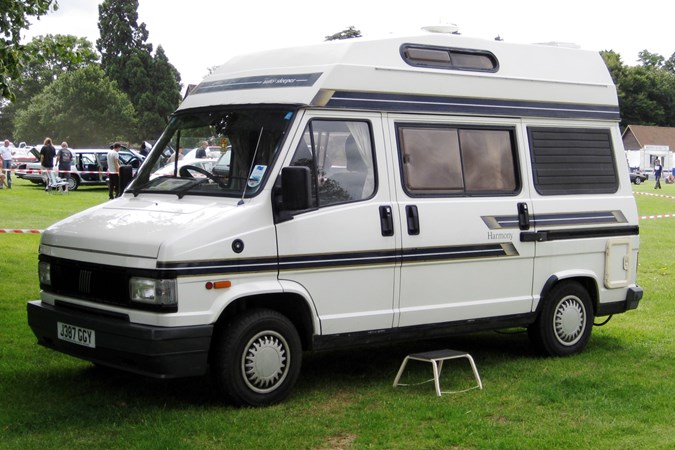
However, a used vehicle provides a very useful cost saving, even if you’re only shopping vans that are a couple of years old. What you save in VAT, you can use as budget for the conversion. They may well be models that have lived a hard yet well-maintained life, and the engines will be solidly run-in.
Older diesel engines may also be better-suited to the months of sitting idle that motorhomes often do. They can also be easier to work on at home.
Many motorhome converters will happily work on second-hand vehicles, too. So, even if you’re not doing the fitting out yourself, you may be able to save a substantial amount by sourcing and supplying a used base vehicle to the campervan manufacturer.
How much does a campervan conversion cost?
How much does a house renovation cost? Pricing depends on how extensive, luxurious and complex the interior fittings are. If you’re just adding a basic bed and camp stove, modifications can cost very little, while a fully bespoke conversion undertaken by professionals will set you back a substantial amount.
Going DIY can cost as little as £500 if you do almost all of the work yourself. However even the relatively handy might find this a struggle. For most, we’d suggest budgeting at least a few thousand pounds in order to get the job done properly.
For safety, electrical, gas and plumbing installations should either be fitted by a professional or checked over by one. It’s well worth stretching the budget to include higher-quality materials, too. They’ll last longer. The van will be much more comfortable to stay in. Never skimp on pillows.
If you’re simply handing your vehicle over to a conversion firm, you could be looking at a bill of £10,000 or more – though this is still a fraction of the price of a brand-new camper.
Do I need a special licence to drive a campervan?
Whether you need a special licence to drive a campervan depends solely on weight. Campervans have maximum permissible weights, like other vehicles. Depending on which categories are on your licence, you may be able to drive some models and not others.
If you passed your driving test before 1997, you’re authorised to drive vehicles up to 7.5 tonnes in total weight; known as maximum authorised mass, or MAM. This covers you for every camper based on a medium-sized or large van. You’ll only have to consider additional training and tests if you want to drive vehicles based on large trucks or heavy goods platforms (HGVs).
If you passed your driving test after 1997, however, you’re only permitted to drive vehicles up to 3.5 tonnes MAM by default. This will still cover you for almost all camper conversions based on medium vans and the vast majority of those based on large vans, too.
If you want to drive larger vehicles, you can always undertake additional training and take a test to get the C1 classification on your licence, allowing you that 7.5 tonne limit that older drivers have by default.
The best vans for a campervan conversion
Experienced converters may use anything from an MPV, American school buses to an old hearse for a campervan conversion. Most will be based on medium to large panel vans to give adequate living accommodation. Here are some of our favourite new models.
The world of used vans is murkier and your choice should take into account the specifics of the vehicles available to you.
Best large vans for a campervan conversion
Fiat Ducato

Around three-quarters of large European motorhomes are based on the Fiat Ducato. As a van it’s a good choice, if somewhat getting on in years. Nonetheless, Fiat really caters to the campervan market with a specific camper series.
These benefit from a wider rear track, lower chassis and improved suspension, and Fiat’s well accustomed to working with camper converters. It’s a great, solid base vehicle and you’ll be in excellent company if you opt for it.
Mercedes Sprinter
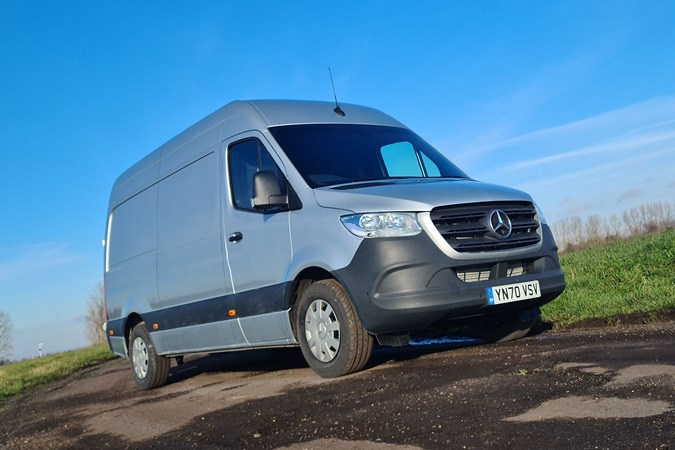
The van of choice for many premium converters, the Sprinter’s one of our favourite panel vans. Its driving manners are exemplary, and Mercedes offers it with an excellent nine-speed automatic gearbox that makes distance cruising effortless.
Pricier than some rivals with a poorer payload, the Sprinter makes up for it with an excellent aftersales network and stellar reliability.
Ford Transit
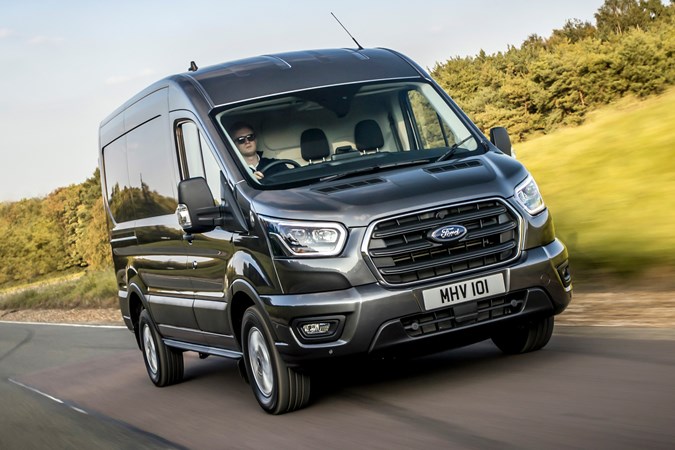
You’ll see many of these lining the lanes of a British campsite, and for good reason. It’s one of our favourite vans to drive, and the range offers lots of choice.
The Transit’s also great value both to buy and to run.
Best medium vans for a camper conversion
Volkswagen Transporter
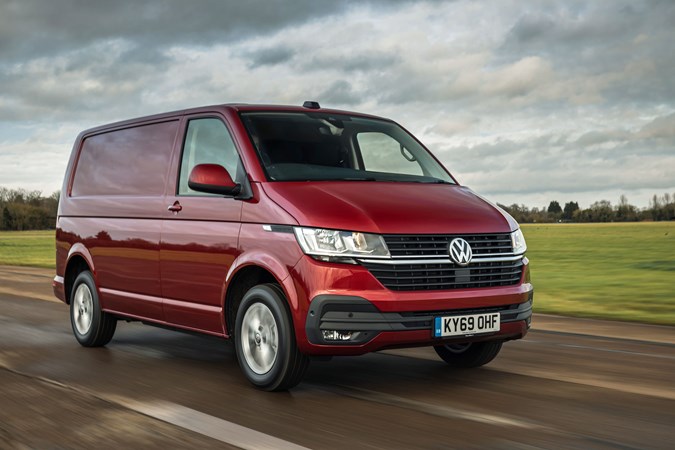
Nothing’s more iconic than a Volkswagen campervan, and VW knows it – it even builds its own, the California, in a dedicated factory in Germany.
Luckily for those undertaking their own conversions, there’s a huge array of Transporters around – often in high specifications making for a van that’s powerful, comfortable to drive and stylish too. Being the most popular means there’s a huge market for third-party components, too.
Ford Transit Custom
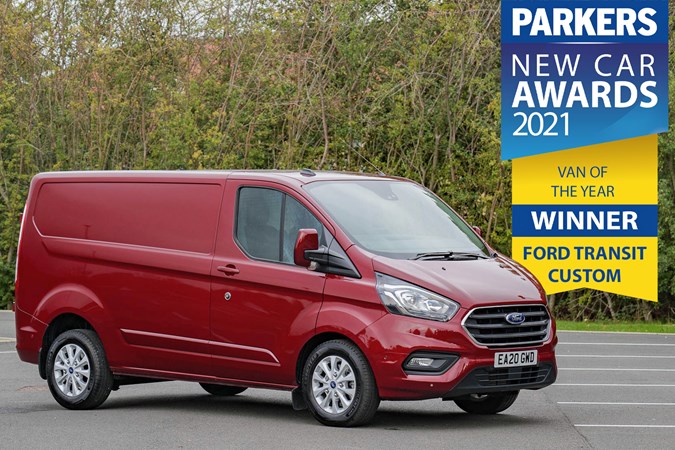
A great number of British converters offer mid-sized campervans based on the Ford Transit Custom – it has an unbeatable image in this country as a workhorse, while its wide interior lends itself to a spacious habitation area.
Maintenance should be effortless, with a network of Ford van centres across the country – and if you want something a little different, Ford will even sell you a plug-in hybrid model with unchanged interior dimensions, ideal for the eco-conscious camper.
Vauxhall Vivaro
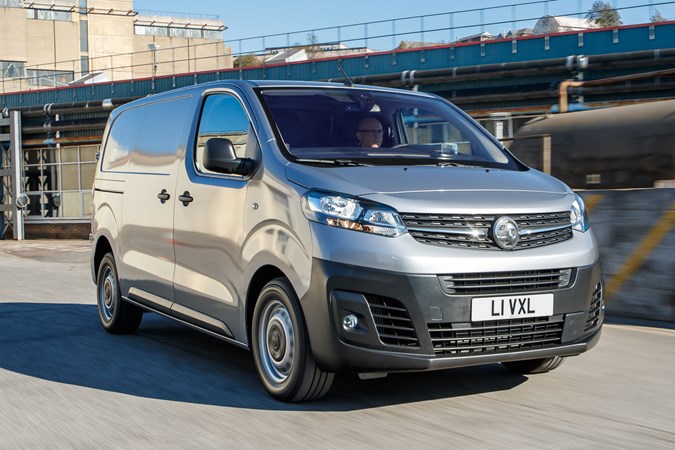
This van and its sister vehicles are all sides of the same four-faced coin. These mechanically identical vans make great conversions for those who want something compact without stepping down to the next size class.
They have low roofs, car-like driving manners and a good range of engines (including fully-electric models), while payloads are high enough that you’ll never have to worry about overpacking. To choose between them, evaluate which dealers you like the look of best, or flip the aforementioned coin.
Other things to consider when converting
How many seats vs how many beds
Campervans will be equipped with a number of travel seats, defined as a seat with a seatbelt. Of all the items in your van, don’t skimp on these (or pillows). Campers in the past have often had flimsy seats that don’t adequately support or protect occupants in a crash. If you’re installing any additional travel seats besides the two or three in the cab, source them properly and have their installation checked by a professional.
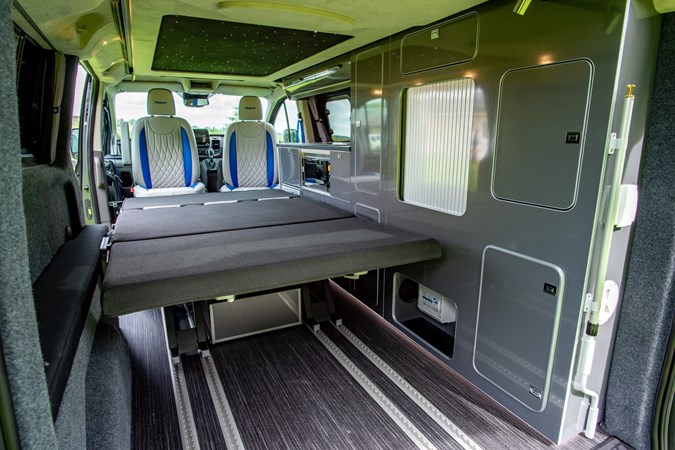
Berths refer to sleeping areas, whether fixed or permanent. It’s usually best practice to match these to how many travel seats you have. After all, what’s the point in having six bunk beds if you can only travel on the road with two people?
Interior layout
This is individual to the user, and there are many options here. Consider which functions you’re likely to make the most use of. Keen cooks may want a larger kitchen, for example, while those who stay on serviced sites may not need a full-sized washroom. Fixed beds are a boon for those who like their rest, but they don’t provide much flexibility, so choose wisely. Layout is key in a small camper.
You might wish to visit a motorhome dealer where you’ll be able to get a good look at many different layouts all at once. This helps you figure out which would work best for you.
Exterior add-ons
Many campervan owners live as much outside as they do inside, and there’s a wide array of equipment that you might want to fit to the exterior of your van to facilitate this.
We’d consider a wind-out awning almost an essential, as it provides shade and shelter for al fresco dining or outdoor lounging. Smaller vans will benefit from a pop-top roof or permanent high-top to provide standing room and additional storage.
There’s also items such as bike racks, satellite dishes or solar panels. Motorhome dealers will have all of this equipment available, and some of it could be invaluable to your plans.
In the cab
Remember that a van is, by and large, a working vehicle. If you’re buying second-hand you may not get many of the amenities you’re used to in your car.
We’d recommend searching out a model with in-cab air-conditioning. It’ll make holidays in hot weather far, far more pleasant. Electric mirrors are useful for manoeuvring, and while a reversing camera is nice to have they’re fairly inexpensive to fit after purchase.
A quick and easy upgrade is a new stereo, which can bring smartphone connectivity, sat-nav and charging capabilities to even the oldest of cabs.
Storage
A campervan essential. Always allow for more than you think you’ll need, and remember to specialise it – kitchen storage ought to have accommodations to keep plates, cups and cutlery secure and safe during transit, for example.

And remember, unlike at home, you’ll need storage for pitching essentials such as levelling wedges and electric hookup cables, plus your outdoor furniture. Models without a fixed bed will also need somewhere to store your bed linen during the day. And don’t forget a laundry basket!
Also read:
>> Campervan body styles – which motorhome is right for me?
>> Campervan twin test: Volkswagen California vs Ford Transit Custom Nugget
>> All about campervan speed limits
>> The Parkers Guide to factory-supported campervans
>> Volkswagen Grand California review
Just so you know, we may receive a commission or other compensation from the links on this website - read why you should trust us.


